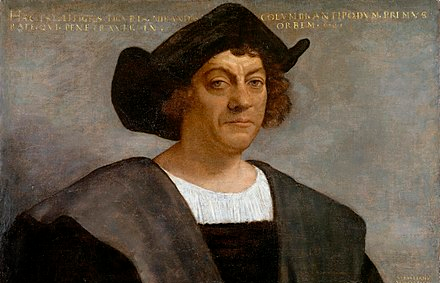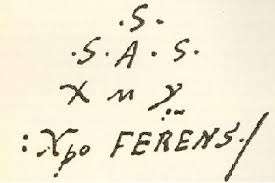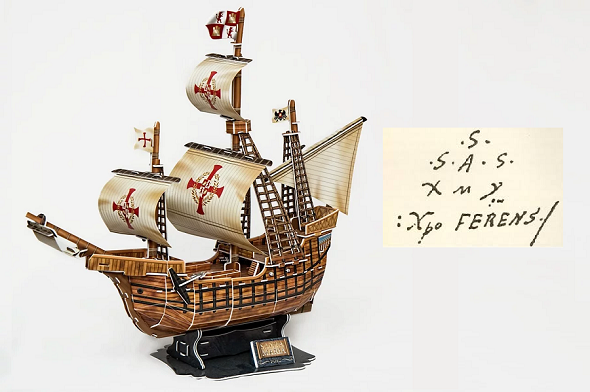Christopher Columbus frequently used a signature that included seven letters not belonging to his name. Do they represent an abbreviation?
There are numerous famous persons who are mentioned in the crypto history literature. Napoleon, Giacomo Casanova, and John F. Kennedy used encryption techniques, just like Beatrix Potter, Thomas Jefferson, and Mary Queen of Scots – just to name a few.
Columbus’ signature
Christopher Columbus, the famous explorer, is not mentioned in the crypto history literature I’m aware of. Either he never encrypted his messages or his ciphers never created much interest.

Source: Wikimedia
When recently I combed through the internet in search of interesting crypto stories, I was suprised to come across a cryptogram Christopher Columbus created. As is mentioned, for example, in the 1825 book Christoph Colombo und seine Entdeckungen (page 161), Columbus frequently signed documents in the following way:

Source: Christoph Colombo und seine Entdeckungen
I found a more detailed report about Columbus’ signature on the blog Mysterious Writings. The following picture shows a scan of the original:

Source: Mysterious Writings
These lines can be transcribed as follows:
S, SAS, XMY, Xpo-Ferens-
According to the Mysterious Writings article, the last line is agreed by most historians to be a Greek-Latin form of the name “Christopher”. “Xpo” is a Greek form of “Christo”, while “Ferens” is meant as a Latin equivalent of “pher”. When translated, “Xpo Ferens” can mean “Christ Bearer”.
What do the seven letters mean?
Apparently, it is to this day unknown what the seven letters in the first three lines mean. Columbus never explained his signature. At least, we know that it was very important to him.
Columbus began using his four-line signature in 1483. Historians have discovered numerous documents bearing these characters from this time on to his death. Columbus even instructed his heirs to continue using the signature themselves. In doing so, he left behind a description of how it is created. He described the signature as an X with an S over it and an M with an A over it and over that an S, and then a Greek Y with an S over it, preserving the relation of the lines and points. The resulting shape is a triangle.
Although Columbus’ signature didn’t make it to the crypto literature, attempts to decipher or explain it have been made.
The most obvious explanation of the seven top letters is that they form an abbreviation. A possible interpretation is “Servus Sum Altissimi Salvatoris Xristus Maria Yosephus”. This translates to “Servant I am of the Most Exalted Savior, Christ, Mary, and Joseph”.
There are other theories, as well. Some suggest the triangle shape is the important part – it could mimic the mast of a ship and a Jewish prayer, supporting the idea that Columbus was Jewish and looking for a new homeland for his Jewish people when sailing over the ocean.
Others think that the letters stand for: “Sarraceno Subjuget Avertat Submovent, Christus, Maria, Yosephus”, which means “May the Saracens be subjugated, turned away, and removed by Christ, Mary, Joseph”. This sentence can be interpreted as a statement supporting the crusades.
While many think that Columbus’ signature is religious in nature, and that the X, M, Y stand for “Xristus, Maria, Yosephus” or “Christ, Mary, and Joseph”, some say that the Y might refer to Ysabel (i.e., Queen Isabella) who financed his journeys. However, Columbus’ first voyage took place in 1492, when his signature had already been in use for almost a decade. So this theory sounds unlikely to me.
If a reader knows more, let me know.
Follow @KlausSchmeh
Further reading: Who can break this enciphered letter written by Albrecht von Wallenstein?
Linkedin: https://www.linkedin.com/groups/13501820
Facebook: https://www.facebook.com/groups/763282653806483/



Kommentare (2)